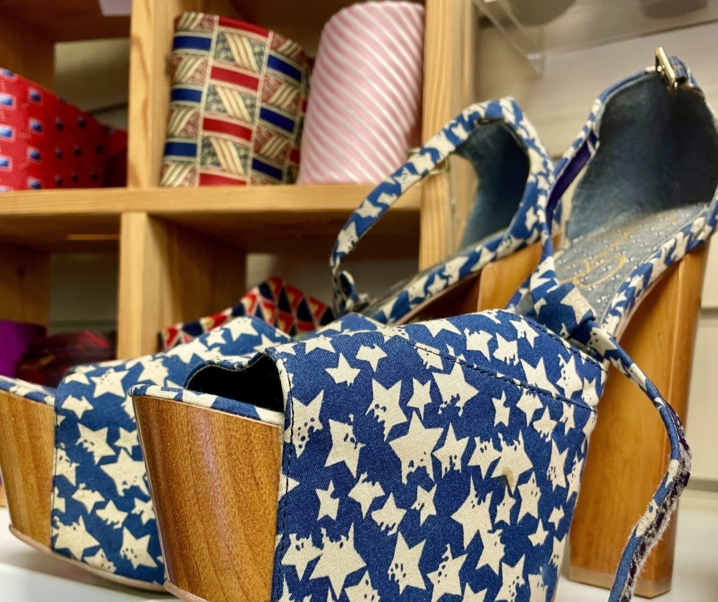“It’s the scariest thing I have ever seen,” my husband concludes when I finally lure him down to my shed.
It has to be said that, after 35 years as a Legal Aid lawyer, he doesn’t scare easily. He can watch horror films that would have me behind the sofa and gut a fish with detached professionalism. But show him a 3ft tall doll which walks and turns it head and he proved curiously hesitant to be in the same room; never mind help me repair her detached scalp.
He’s not the only scared witless by animated dolls. I have another friend who pronounces all of my dolls ‘creepy’ – even when they are tiny, baby dolls made of rubber. I daren’t even discuss the new addition to the family because she’d need years of counselling. Dubbed ‘Scary Mary’ by another pal, my doll is a 10/10 on the creepy register because she’s old, dusty and dressed in moth-eaten lace. She also has blinking eyes and, yikes, teeth.
Add these features to her life-size proportions (not life-size to me – a 5ft 6inch size 16 doll would be entering truly disturbing mail-order territory) and her ability to walk without a computer chip or batteries and you can see why she’s slightly unnerving to behold.

It’s not just my doll. In 2015, a YouTube video of a doll walking along a Mexican street hand-in-hand with its owner attracted more than 5 million views. The videographer suggested this doll would walk with no one else; proof – therefore – that something spooky was afoot.

The ghostly explanations attracted so much traction, Youtube psychic/mystery investigator Gabe Hash was forced to make a debunking video showing this walking doll was merely a toy – popular from 1950s to the 1970s – powered by a levers and pullies; not demons.

But Gabe’s cute images of kids playing with ‘Lili and Ledy’ walking dolls from 1977 did nothing to allay the fears of some of his viewers.
‘Dolls scare me, especially dolls that look like that’, observes Bri Marisa Castillo.
Amy Annunziata added;“Those things look like they will come alive at night and watch you while you sleep…”
Fortunately, Stephanie Thesing was able to bring a bit of sanity to the doll debate; “I had a similar doll when I was little in the late 1960’s. Didn’t have the clockwork mechanism inside but was marketed as a ‘walk with me’ doll. With a lot of effort you could get it to walk a bit but it was too much effort for a kindergartener. It did a lot of standing in the corner…’.
Stephanie inadvertently hits on the reason why the ‘spooky’ Mexican doll appeared to walk exclusively for it’s owner. I don’t recall walking dolls from my own childhood but, as a new-comer to the spooky doll party, I can confirm they’re tricky little madams to get going. You have to tilt Scary Mary’s head forward, lift her arm, push her down and – given a fair wind – she’ll shuffle forward; a bit. It’s not elegant walking, it’s more first steps after a long, debilitating illness.
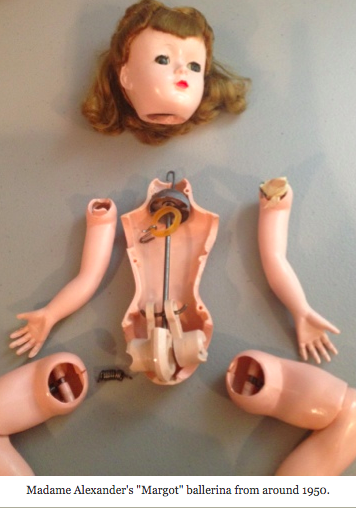
This ‘zombie’ walking style is typical for these early dolls – even at their best. Artist Amanda Boggs, of North Carolina, restores and sells dolls and often gets queries about repairing walkers. “The idea was that a girl could pull her doll along by the hands and it would appear to be walking,” she says.
“They are complicated mechanisms. A walker doll has legs connected in such a way that when one moves the other will also move in a walking motion. Some also have heads that turn from side to side as the legs move…they never really worked all that well.”
Amanda features a deconstructed walker doll on her blog Atelier Mandaline (see picture above). She’s a skilful restorer but even Amanda admits that it might be easier for amateurs to dismantle the ‘walking’ equipment. The alternative bears much resemblance to major surgery.


“They usually need to have the elastic band between their legs replaced with new cord,” says Amanda who runs the wonderful Esty shop Atelier Mandaline.
“I rely on a surgical hemostat, doll stuffing tools, and anything else I can get in there to manipulate the mechanism. I replace any old rubber bands and especially springs with elastic stringing cord. The old springs are troublesome due to their tendency to become stiff. The stiffened spring puts all sorts of pressure on the doll’s fragile seams and forces them (to fall) apart.”
Gosh.
Amanda kindly offer tips on repairing a composite doll like ‘Scary Mary’ (if you are feeling brave follow this link) but I fear her problems are beyond surgical hemostats. When I got my new doll home – a feat in itself considering all the bits likely to drop off – I discovered a host of major problems hidden by the lacy dress and matted wig.
Scary was full of holes. She had a veritable crater under her arm which meant elasticated left arm kept disappearing inside the cavity. She had missing fingers (some Sellotaped to the torso) and general chipping, flaking and scalping – a previous mummy had clearly removed her original hair and replaced it with plaits stuck onto a piece of flat cardboard (it was usual for walking dolls to have a ‘lobotomised’ head as you’d needed access to her working parts for repairs).

My friend and fellow vintage collector Louise Weaver (follow her gorgeous Instagram account to see some genuine toy treasures) noticed the problem instantly; “She looks like she’s got a flat-top,” she laughed.
“Why did you buy her?”
I really can’t answer that but I am a sucker for a un-loved doll with sad eyes. Moreover, Scary’s ability to keep strangers, friends, my hubby and my dog at bay may have had something to do with it.
As for her future? Don’t tell Scary Mary but after I’d had my fun – she might be destined for a little journey to the local tip.
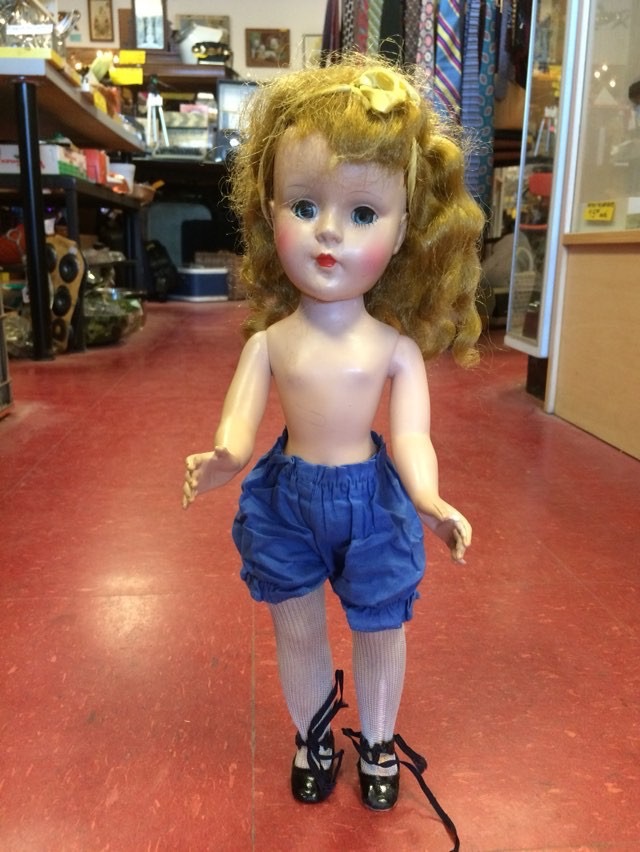
Walking doll enthusiast Kyllikki Inman, owns East Hill Antiques in Ithaca, New York.
“I didn’t own a walking doll as a child. The first one I found was as an antique dealer more 35 years ago – she stood at 3 feet tall. She was in beautiful condition and with her original clothes. I think she was an ‘Ideal’ doll and sold for $25.
Dolls and doll related items like carriages, beds and clothes used to sell well but now you practically have to give away the beds and carriages and you only tend to sell the dolls if they are very cheap – and probably to someone who will make art out of them. It’s kind of sad. I expect kids today just want games. While dolls house dolls – and Trolls – are popular there’s not a great demand for life-size walkers.”
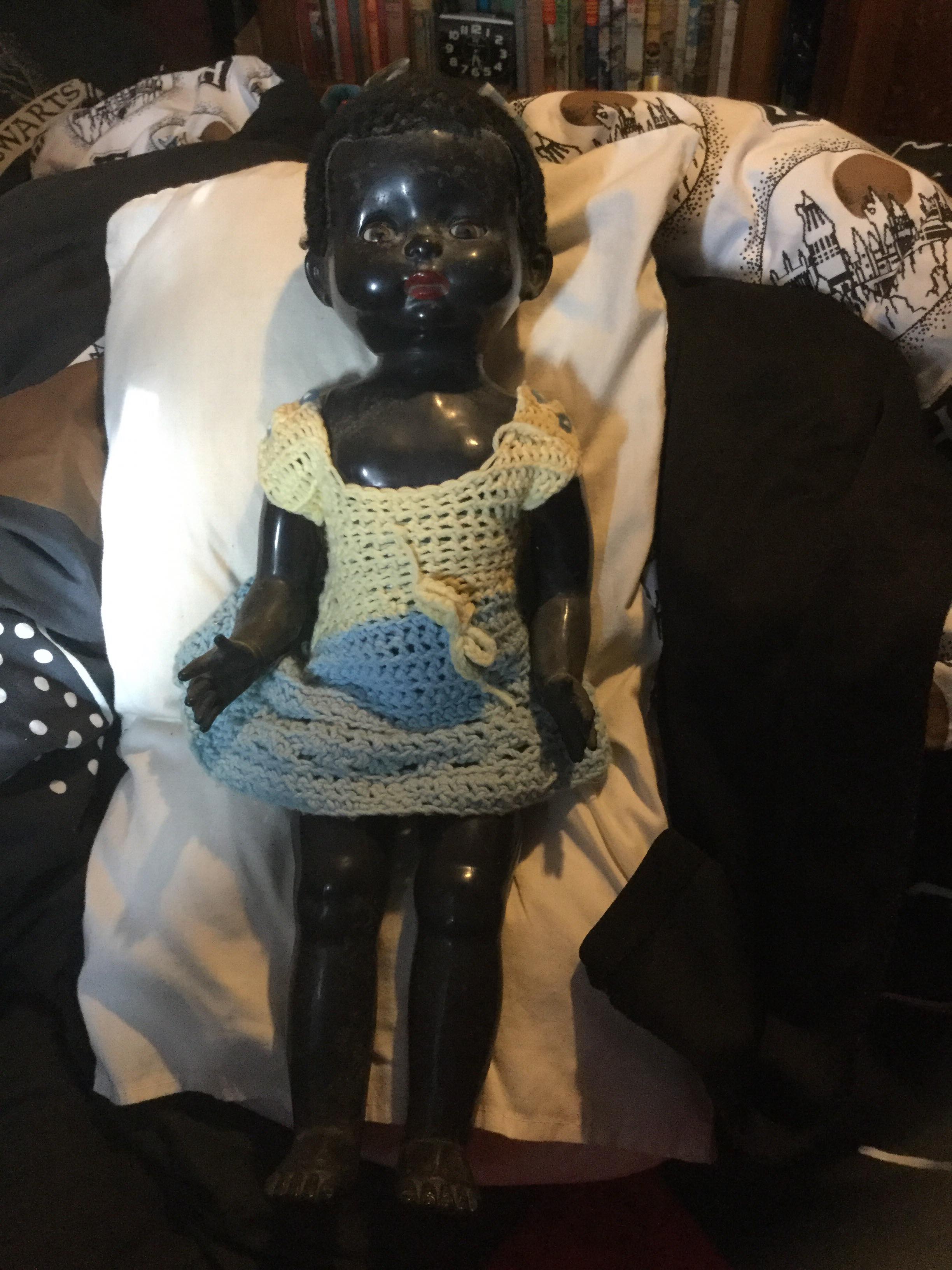
Walking doll owner Lynne Holifield, lives in Blackpool. She owns a vintage Pedigree walking doll.
“I was not really into dolls as a child but I loved my walking doll Samantha and my Chatty Cathy. I remember her original dress. It was red and white and it had a gold plastic ‘Samantha’ on the skirt and white socks not sure about the shoes. She was beautiful and my mum knitted her a new dress.
“I still have poor Sam. These days she is very floppy, she doesn’t walk and voice box just makes a little noise ‘maa’ sound. She’s not broken but one of her eyelashes is half gone and her hair is dusty. I just don’t have time to bother with her as I brought up three children and now I look after the grandchildren…but I have lots of lovely memories in my head.”
A short stroll through the history of walking dolls

The autoperipatetikos
Dolls go back to early Greek and Roman times but those early figures are static, primitive things hewn out of wood or stone. For articulated limbs and moving parts – we have to wait for doll makers to become more skilful (and attract richer customers). In the later half of the 19th Century, the first patents are filed for ‘walking’ dolls. Gloriously known as ‘autoperipatetikos’ – it’s a flouncy was of describing any doll which walks by means of a clockwork mechanism.
Commonly made in the great doll making countries of France and Germany; the first examples were made in America where there are still – working – examples. Fortunately, you don’t have to use up your air miles as YouTube has videos of these cute toys in abundance.
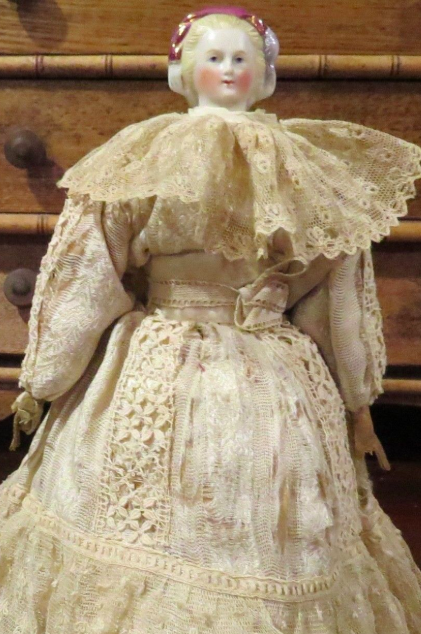
Worth; You are marching towards a small fortune if you own one of these; they commonly fetch upwards of £500 if in good working order; even with repairs.

Steiner dolls
Jules Nicholas Steiner (1835-1905) was working in Paris as a clockmaker. Understandably, if anyone was going to get a doll moving, as if by clockwork, it was Steiner. He applied for his first patent in 1855. Steiner’s doll could walk – and talk – he also introduced a patent for an ‘unbreakable’ doll. Steiner’s wind-up dolls could also move their arms up and down and back to front while walking. This example – sold via Ruby Lane – can move her head and cry ‘just beautifully’. Is she unbreakable? Well, according to the retailer, this beauty is in perfect working order and the only sign of repair are leather patches on her knees.
Aww.
Worth This one is for sale at $1,782 (£1,337).

Fleischman & Blodel
Doll shown circa 1910
A German manufacturer founded in 1873,, Fleischman and Blodel supplied quality dolls to the French market (often under-cutting local doll makers). They produced not only walking dolls but running, nodding and kissing dolls. These dolls commonly used a chain drive to pull a spring mechanism, which operated wheels in the bottom of the doll’s feet.
The company – which ran up until 1926 – also patented the Eden bebe doll – dolls which looked like children as opposed to the usual miniature adults. Ruby Lane also sold ones of these pretty dolls. When this girl walks, her head turns from side-to-side. As is usual for a doll of this age, she wears a couture outfit and a human hair wig.
Worth; This one was on sale for £824
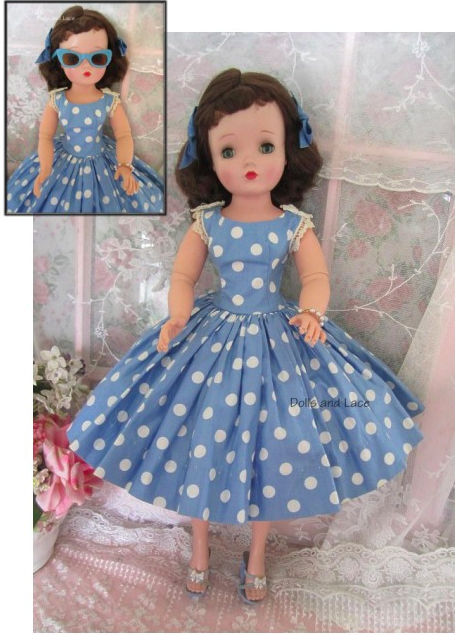
Alexander doll company
Original ‘Cissy’ (and her smaller version ‘Cissette’) walker dolls made between 1948-59
The 20th Century saw simpler, cheaper mechanisms being introduced to enable dolls to walk. From clockwork and wind-ups, we see the introduction of pulleys and levers, springs and elastic being introduced by famous doll-makers like Madame Alexander.

Cissy walker dolls – like the one skilfully restored by Amanda Boggs (picture above) – was the ultimate doll; then and now. Madame (Bertha) Alexander was the American doll maker who ruled supreme for 65 years introducing innovative designs – and character dolls like the Scarlett O’Hara – which became collector’s items at the time. Cheap materials were not for Madame Alexander; each designer dress was made from the finest linens, silks and lace.
According to doll expert Jo-Ann Morgan; “The doll’s flamboyant matching shoes and hats were legendary,” she says.
“Cissy was a trend-setter in fashion; from classic suits and coats to casual peddle pushers and sandals. People even collected the ads picturing her newest outfits. All year long collectors waited for the newest fabulous fashions.”
They were certainly not play-things for little ones; “Cissy was expensive and often out of reach of their parents’ pocketbook. In the 1950s and early 1960s four or five hundred dollars for a doll, regardless of how wonderful, was a shocking price,” Jo-Ann, who made replica outfits for Cissy dolls, explains.
“This high price range, however, restricted the number of dolls made, making them highly collectible today. Even the boxed extra outfits were expensive. Few women of the day could afford a $45 dress for themselves, let alone a doll.”

Worth; Expect to pay around £100 for a vintage-worn doll and up to £500 for one in mint condition wearing her original clothes.
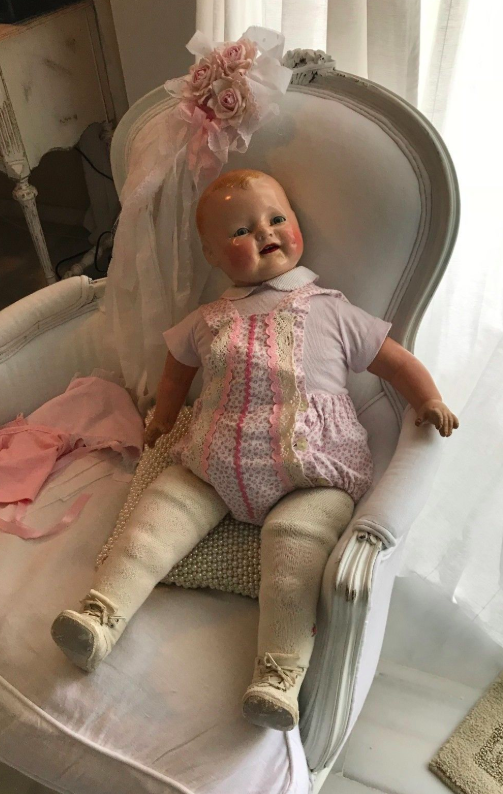
Horsman dolls
Edward Horsman opened a toy company in New York city in 1865, the company soon became a leader in the toy industry. Horsman’s dominance of the toy industry saw them making many variations of walking/talking dolls. The dolls were made in American until 1980 when they were sold to an Asian company.
The Sear’s Catalogue (circa 1931) proudly announced they were America’s ‘best make’ before going onto extoll the virtue of Baby Dimples – moving eyes, open mouth and baby teeth it featured a ‘learning to walk mechanism’. Whereas Babs, Sue, Jane and Nan were all walking and talking dolls of varying sizes.

Other famous Horsman walkers of the 50s and 60s included Ruthie, Cindy Strutter and Thirstee walker – who could walk, drink from a life-size bottle and, afterwards, she could even wee.
Worth: A vintage Thirstee Walker sold on eBay for £72; you can pay around £20-30 depending on age and condition.

Ideal Toy Company’s Saucy Walker
Okay, so the Ideal Toy Company produced many, many dolls (and teddies) after World War II. Some of the unforgettable models included the gorgeous Miss Revlon – in 1957 this model was given a walking function – Shirley Temple (walking and non-walking) and the often imitated Patti Playpal; 35 inches tall, the same size as an average three-year-old. These dolls were hugely popular.
But I’m picking out the gloriously named ‘Saucy Walker’ (and her sister Posie with her bendable knees) for special attention. Vanda of Dolls, Dolls, Dolls website says there’s more than a passing resemblance between these American beauties and their English counterparts made by Pedigree.
“Early Saucy Walkers had flirty eyes, open mouths with teeth and wigs,” she says.
“The main difference I can see is that the Ideal doll has her crier in the front and the Pedigree in the back.”
These were pretty, rosy-cheeked dolls cried through their voice box. It’s usual for them to have sweet plaits and wonky eyes (corrected by giving the head a little tilt).
Ideal advertised these dolls as being able to do ‘everything’ – walk, talk, sit and stand unaided all without winding and keys. The synthetic saran hair could even be washed and styled.
The example pictured left, dates from 1955 and is 17 inches tall and she not only has her original clothes but her tag and hair curlers. Cute. She’s being sold through Ruby Lane for £54.
Worth: £20-100 depending on condition but you’ll also have to factor in shipping as most are through sellers based in the United States.

Pedigree walking dolls
Like their American cousins, Pedigree dolls came in all shapes and sizes – hair colours and moveable parts. In addition to dolls in pretty dresses; they also made walking doll nurses, brownies and – shucks – brides. Dolls are usually marked “Pedigree – Made in England and, although the firm existed until the 1980s, the most collectable (valuable) walkers date from the 1950s – by the time the 60s came along, Pedigree was obsessed with promoting a teenager phenomenon called Sindy.


One of the most popular models was “Brighton Belle’ which not only walked but could stand, sit, say ‘mama’ and – she also had teeth (possessing all her own teeth is important when it comes to value).
Worth: They are very collectible and value depends on condition and age. All sorts of variables will affect the price including condition of hair, body and the original clothing – plus working parts, in particular the voice box which is invariably broken. A Brighton Belle (fair vintage condition) sold for £50 in June 2018. But even a poor, restored, doll sold for £51.

Luvabella by Spinmaster
I think you’ve probably guessed from the appearance of Luvabella that I have whizzed forward in time. Luvabella is predicted to be the hit doll for Christmas 2018.
Just to put this in context – my generation’s walking doll thrilled and amazed by a doll which could walk, talk, cry and wee. Sadly, all of these ‘amazing’ features sounded better in the adverts…and yet we pronounce these dolls ‘scary’ because they were so lifelike.
Luvabella can not only talk – her speech can develop when you talk to her. She can feed, play peek-a-boo, burp and she even has a heartbeat.
Worth; She’ll retail for £69.99.
Footnotes – the journey of my own Scary Mary walking doll

Despite a LOT of hard work to try to restore my walking doll – washing her clothes in Lux, gluing fingers and her scalp back onto her head and patching up her body with papier mache – I have have to accept that (unless you are an expert like Amanda Boggs – see tips) it is probably best to leave your doll in its original state.
What is truly remarkable – considering her age which is likely to be pre-50s as she’s made from wood pulp, not hard plastic – is that she can still walk.

Sadly, I did a lot of research on her maker but – as with a lot of unmarked dolls – I couldn’t find anything remotely similar so she’s not a valuable antique. My best guess is that she was being made to ‘look’ like an expensive American Horsman doll but was more likely to be found in the cheap goods aisle at the down-town grocery store.
My other best tip is examine your purchases all over before you buy – even if that means asking the potentially embarrassing question about removing clothes. Scary Mary would tax the most able doll restorer as she’s made from pulped paper – which is hard to repair. Having said that, she was in such a poor state – I almost felt I could go a little mad and practice some restoration techniques without destroying a rare and valuable doll.
As the wonderful Amanda Boggs says; ” Don’t give up, that is how I learned. I used to just buy big boxes of dolls and I would fix anything I could. If I could sell the doll later I considered it a bonus and that way I taught myself to repair them.”
Who knows – I may have a surgical hemostat of my own very soon.
Sources









